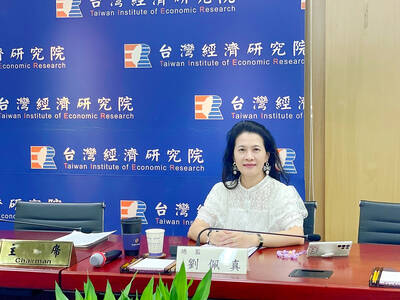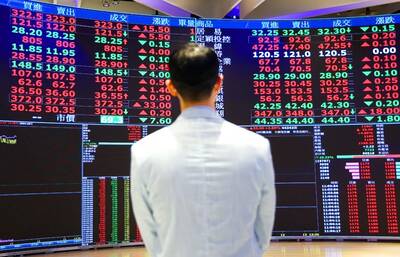India’s central bank is expected this week to hike interest rates for the seventh time in less than 12 months to clamp down on soaring inflation as clouds gather over the country’s booming economy.
Shares on the Mumbai Stock Exchange, one of last year’s hottest markets, have fallen to three-month lows due to expectations of interest rate rises, which will dampen economic growth currently running at 8.5 percent to 9 percent in Asia’s third-biggest economy.
Annual inflation zoomed last month to 8.43 percent, up by nearly 1 percentage point from the previous month, led by a spike in the cost of food, gasoline prices and commodities.
The Reserve Bank of India (RBI) has warned of “surging inflation.”
Further souring the mood, investment house Goldman Sachs issued an alert this month on India and China over inflation, telling clients to shift into Wall Street and other “old world” share markets as a safer bet in coming months.
“We expect the Reserve Bank will raise rates by 25 basis points but the possibility of 50 basis points also has to be entertained,” HSBC chief economist Lief Lybecker Eskesen said.
Rising prices have emerged as a major political and economic challenge in emerging markets across Asia, with China also expected to raise interest rates early next month to combat 5 percent inflation and a property bubble.
In India, pressure has been steadily growing on the central bank and government to act to rein in inflation which threatens Indian Prime Minister Manmohan Singh and his Congress party in the run-up to key state elections this year.
Rising food prices have added to public anger over a series of massive corruption scandals, creating a toxic mix for Singh’s administration just 18 months into its second term.
The price of onions, for example — a staple on family shopping lists and a politically potent issue — has tripled to 80 rupees (US$1.75) a kilogram in a few months.
“A lot of countries are still flirting with deflation. On the other hand, we are having surging inflation,” RBI Governor Duvvuri Subbarao said last week.
India’s central bank has been one of the most aggressive in raising the cost of borrowing as the South Asian economy roared out of the global downturn.
It has raised rates six times since last March, pushing the repo — the rate on loans it makes to commercial banks — to 6.25 percent and the reverse repo — the rate it pays to banks for deposits — to 5.25 percent.
Economists are split on the efficacy of raising interest rates to tackle inflation driven by food prices, but all agree that sustained rising prices can lead to a destabilizing wage-price spiral.
This was one of the concerns raised by Goldman Sachs in its report on India, which also focused on a yawning record current account deficit of 4.1 percent of GDP.
Investor enthusiasm for China is also cooling as it fights inflation and a property bubble amid expectations that the US will experience a strong recovery.
“Asia is not in the sweet part of the cycle. The longer-term picture of Asia outperforming the US is taking a breather,” said Tim Moe, Goldman’s chief Asia-Pacific strategist, British media reported.
However, Goldman Sachs and other economic houses say they are still bullish on the longer-term outlook for India with its vast market of 1.2 billion people.
“There are near-term hiccups for sure,” said Rohini Malkani an economist at Citi India, but the obstacles will “not be enough to derail the [India] story” with its vast consumer market.

A proposed 100 percent tariff on chip imports announced by US President Donald Trump could shift more of Taiwan’s semiconductor production overseas, a Taiwan Institute of Economic Research (TIER) researcher said yesterday. Trump’s tariff policy will accelerate the global semiconductor industry’s pace to establish roots in the US, leading to higher supply chain costs and ultimately raising prices of consumer electronics and creating uncertainty for future market demand, Arisa Liu (劉佩真) at the institute’s Taiwan Industry Economics Database said in a telephone interview. Trump’s move signals his intention to "restore the glory of the US semiconductor industry," Liu noted, saying that

On Ireland’s blustery western seaboard, researchers are gleefully flying giant kites — not for fun, but in the hope of generating renewable electricity and sparking a “revolution” in wind energy. “We use a kite to capture the wind and a generator at the bottom of it that captures the power,” said Padraic Doherty of Kitepower, the Dutch firm behind the venture. At its test site in operation since September 2023 near the small town of Bangor Erris, the team transports the vast 60-square-meter kite from a hangar across the lunar-like bogland to a generator. The kite is then attached by a

Foxconn Technology Co (鴻準精密), a metal casing supplier owned by Hon Hai Precision Industry Co (鴻海精密), yesterday announced plans to invest US$1 billion in the US over the next decade as part of its business transformation strategy. The Apple Inc supplier said in a statement that its board approved the investment on Thursday, as part of a transformation strategy focused on precision mold development, smart manufacturing, robotics and advanced automation. The strategy would have a strong emphasis on artificial intelligence (AI), the company added. The company said it aims to build a flexible, intelligent production ecosystem to boost competitiveness and sustainability. Foxconn

STILL UNCLEAR: Several aspects of the policy still need to be clarified, such as whether the exemptions would expand to related products, PwC Taiwan warned The TAIEX surged yesterday, led by gains in Taiwan Semiconductor Manufacturing Co (TSMC, 台積電), after US President Donald Trump announced a sweeping 100 percent tariff on imported semiconductors — while exempting companies operating or building plants in the US, which includes TSMC. The benchmark index jumped 556.41 points, or 2.37 percent, to close at 24,003.77, breaching the 24,000-point level and hitting its highest close this year, Taiwan Stock Exchange (TWSE) data showed. TSMC rose NT$55, or 4.89 percent, to close at a record NT$1,180, as the company is already investing heavily in a multibillion-dollar plant in Arizona that led investors to assume